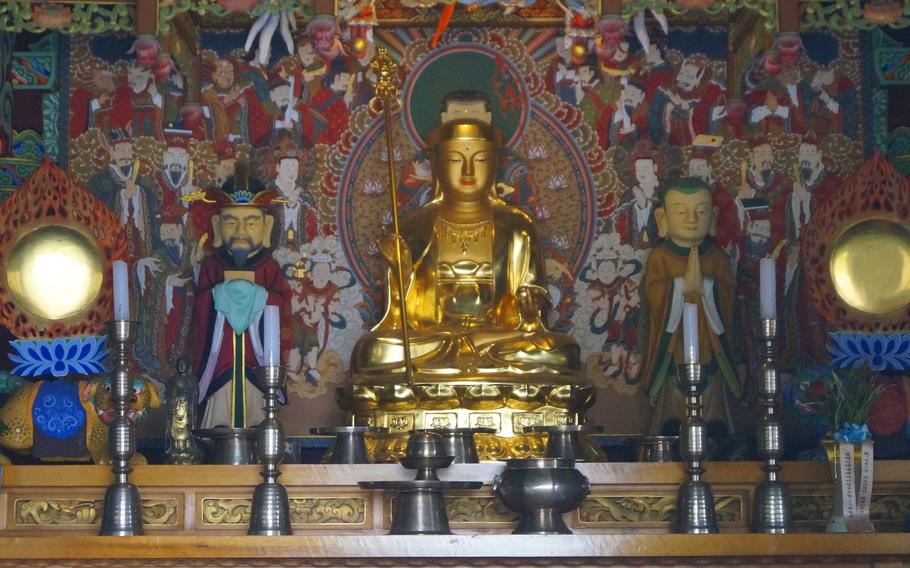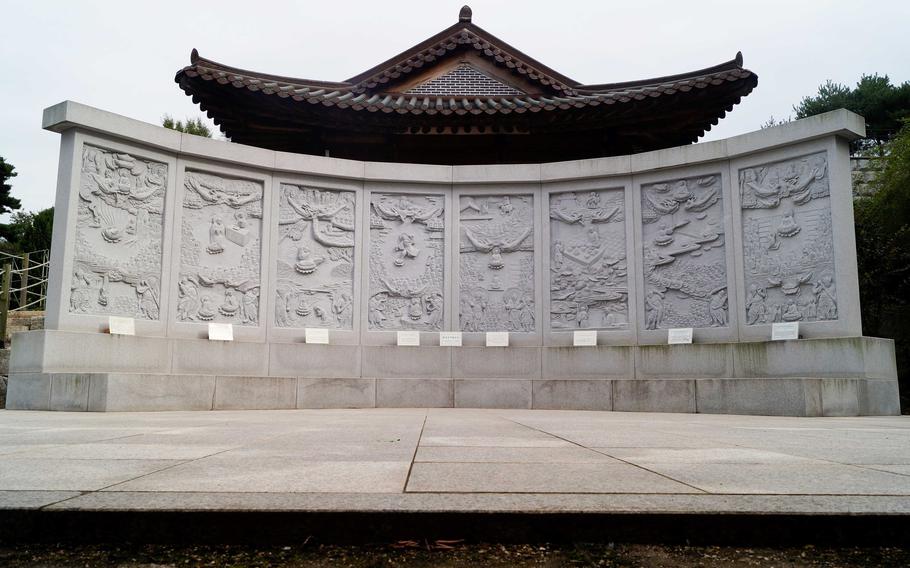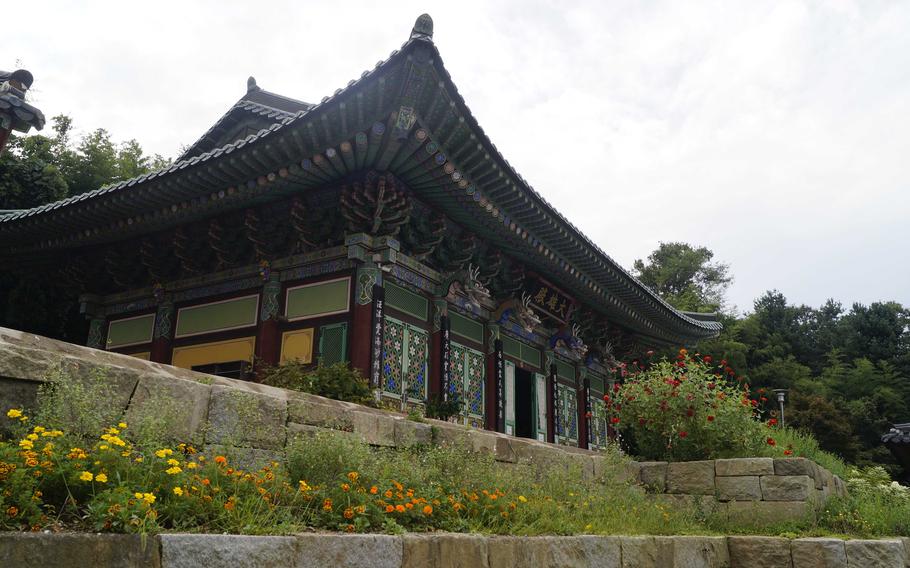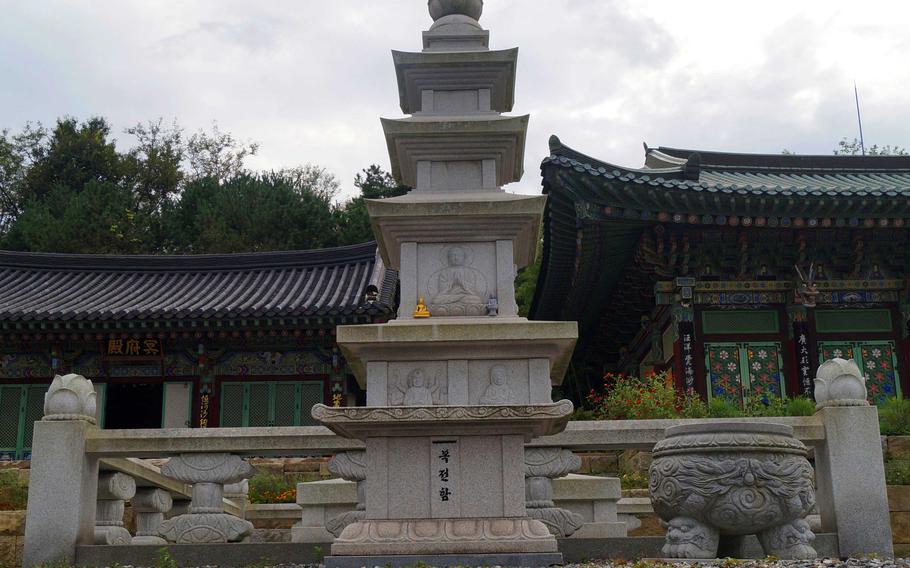
Sudosa Temple was built in A.D. 852. According to legend, a Buddhist monk named Wonhyo achieved enlightenment after a life-changing event there. (Christopher Green/Stars and Stripes)
Sudosa Temple in the countryside beyond Pyeongtaek city affords an opportunity to glimpse enlightenment in a historic setting.
Sudosa was built in A.D. 852. According to legend, a Buddhist monk named Wonhyo achieved enlightenment after a life-changing event at the temple. The tale is carved on a stone wall there.

Sudosa Temple was built in A.D. 852. According to legend, a Buddhist monk named Wonhyo achieved enlightenment after a life-changing event there. The tale is carved on a stone wall on the grounds. (Christopher Green/Stars and Stripes)
After taking shelter in a cave during a rainstorm, Wonhyo was struck with thirst. He grabbed the closest cup-shaped object he could find, which he believed to be a gourd, and drank the water inside.
However, when the rain dissipated, he realized that his shelter was an ancient tomb. The conveniently placed gourd was none other than a skull filled with water.
Wonhyo was at first disgusted by the macabre cup. But then he considered his mind’s ability to shape its reality. The water he drank had quenched his thirst, after all. In this way, he achieved enlightenment.

The monks of Sudosa Temple in the South Korean countryside teach regular classes on making traditional temple foods like rice and soup. (Christopher Green/Stars and Stripes)
Visitors need not drink from a skull cup to appreciate the beautiful setting and temple itself.
Two menacing stone warriors, Narayeon Geumgang and Miljeok Geumgang, glare down at visitors at the temple entrance. They are manifestations of a protective bodhisattva, a person on the path toward Buddhahood.
Brave the fierce stare of the guardians and you’ll find the temple grounds are a feast for the eyes. Vibrant paint covers its walls. Feel free to enter the temple, but first remove your shoes and don the slippers provided.

Glimpse enlightenment in a historic setting at Sudosa Temple in South Korea's countryside. (Christopher Green/Stars and Stripes)
The monks of Sudosa Temple teach regular classes on making traditional temple foods like rice and soup. Unfortunately, the monks don’t speak English. The fee is 30,000 won, or about $22.17. For another 70,000 won, guests may stay the night and experience monastic life.
The visitor center also contains a small museum with friendly, English-speaking staff.
On the QT
Directions: 58, Hoam-gil, Pyeongtaek-si, Gyeonggi-do. About an hour’s drive from Pyeongtaek.
Times: The visitor center is open from 9 a.m. to 6 p.m. Closed on Mondays and national holidays.
Costs: No admission to walk around the temple; however, a two-day, one-night stay is 70,000 won; one-day temple-life experience is 50,000 won; traditional cooking class is 30,000 won.
Food: The meal you’ll learn to make can be eaten on the premises.
Information: 031-682-3169